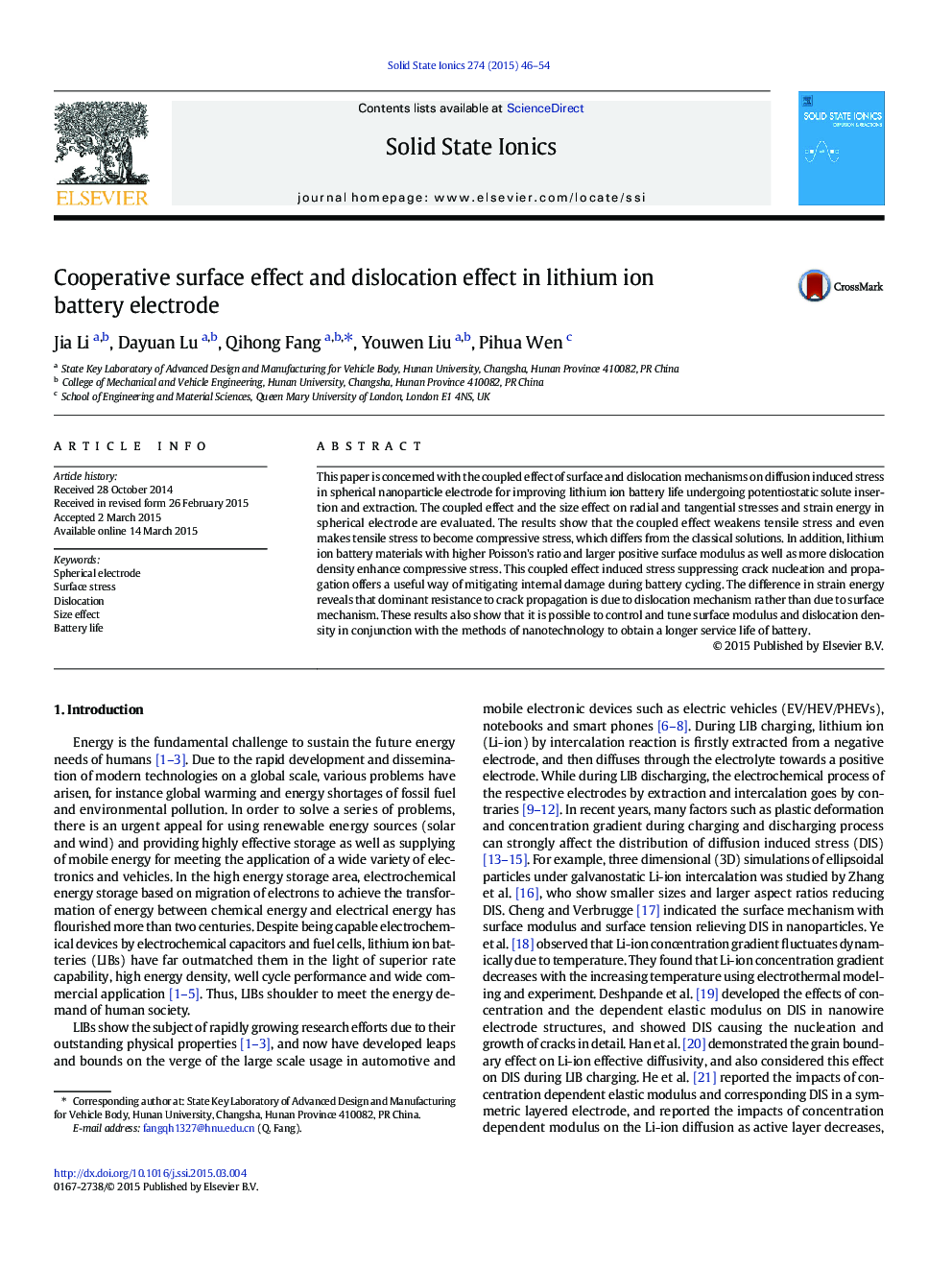| Article ID | Journal | Published Year | Pages | File Type |
|---|---|---|---|---|
| 1293616 | Solid State Ionics | 2015 | 9 Pages |
•Coupled surface and dislocation effects for improving battery life are established.•Surface and dislocation effects lower tensile stress under potentiostatic condition.•Trend of crack nucleation and propagation weakens at nanoscale spherical electrode.•Surface and dislocation effects suppress crack nucleation.•Potential method reduces internal damage and improves battery life.
This paper is concerned with the coupled effect of surface and dislocation mechanisms on diffusion induced stress in spherical nanoparticle electrode for improving lithium ion battery life undergoing potentiostatic solute insertion and extraction. The coupled effect and the size effect on radial and tangential stresses and strain energy in spherical electrode are evaluated. The results show that the coupled effect weakens tensile stress and even makes tensile stress to become compressive stress, which differs from the classical solutions. In addition, lithium ion battery materials with higher Poisson's ratio and larger positive surface modulus as well as more dislocation density enhance compressive stress. This coupled effect induced stress suppressing crack nucleation and propagation offers a useful way of mitigating internal damage during battery cycling. The difference in strain energy reveals that dominant resistance to crack propagation is due to dislocation mechanism rather than due to surface mechanism. These results also show that it is possible to control and tune surface modulus and dislocation density in conjunction with the methods of nanotechnology to obtain a longer service life of battery.
